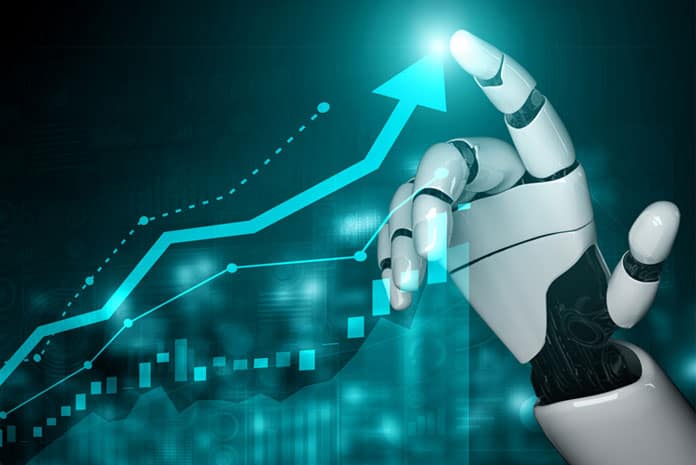By Prativa Mohapatra
A century ago, the world witnessed a similar pandemic as today’s coronavirus, but it’s the magnitude of the impact that we’d never imagined. The pandemic has made the world of just a few months ago, seem like a distant memory and we’ve never lived through a moment like this – the great lockdown . And as we enter the “Unlock” phase and the “new normal”, the future and what it holds in store is still unknown, but, I believe there is reason for optimism as there are definitive actions that we can take today that improve our resilience and strength in the future.
In the last couple of months, I have had many encouraging discussions with CXOs and Senior Government Officials. These leaders are most definitely not content with not only enduring the current crisis, but thrive, succeed and build resilience for the future. They see this moment as a mandate for change, to take forward the actions of today and rethink everything – from reinvigorating the economy with technology and skills, to envisioning the role of the enterprise in modern society, to the nature of work itself.
Like all countries, planning the reset and recovery in India, requires a relook at what worked, and what needs to be improved. For example, this needs to start with making the Indian healthcare sector more resilient and flexible, ensuring robust supply chains and digitization of key sectors that requires an investment in future oriented, secure and scalable technology solutions.
There is also a need to rebuild agencies’ confidence; enable citizens to get back to work; help return the private sector to full output; and shorten the length of the economic downturn. Technology, business model and process transformation have big roles to play in effectively making that happen. Similarly, businesses recognize that success in the future means reinventing the enterprise and building smarter businesses.
The lockdown tested the organizations’ business continuity preparedness as well as agility, and they want to be well-equipped in the unlock phase. However, the sheer scale of planning and number of decisions required could easily overwhelm their traditional planning methods. A systematic approach focused on these key themes can help organizations emerge smarter, resilient and more agile:
- Work safe, work smart to build a workplace where employees feel safe, confident and secure
- Engage customers and improve their experience with data, AI and omni-channel integration
- Enhance IT resiliency and business continuity to mitigate risks with backup plans in order to meet new challenges with scale, efficiency and speed
- Accelerate agility and efficiency of IT infrastructure with Cloud to quickly respond to whatever comes next
- Protect against new cybersecurity risks
- Build resilient supply chains and operations by using AI and automation to sense and respond to evolving demands.
Getting employees back to work, with the highest regard for their health and safety, is an essential first step for organizations today. Here’s a data driven approach that organizations can take for the first theme ‘work safe, work smart’, to ensure the wellness of employees and safety of their workplace:
First, return smarter by taking evidence-based decisions about when to have employees return to the workplace and when certain offices or worksites should be closed. These decisions depend on the collection and analysis of real-time data from multiple sources, including local infection rates and trends, voluntarily-shared employee symptoms and test results, employee and household health risks, and state and local regulations.
Second, use space wisely by reallocating spaces; designating no-go zones; arrange for cleaning schedules; monitor crowding, social distancing and mask-wearing.
Third, maximize the effectiveness of contact tracing with the support of care agents and contact tracers while preserving employee privacy. When employees voluntarily notify their employers of a positive test result and give consent, contact tracers can conduct interviews and use information from multiple sources to help identify individuals who should be notified of potential exposure, document all case-related information in a secured, privacy-preserving system, and trigger employer-designed case management workflows to support employees while they recover.
Fourth, adjust and optimize workforce deployment viz-a-viz job roles, skills and locations and adopt practices that drive engagement and productivity.
Lastly, communicate with employees, vendors and other stakeholders through AI-enabled virtual agents and apps to provide answers from employers on COVID-19 and other relevant HR questions. These tools let employees self-report symptoms, learn whether or not they should report to work that day and find out the best time to arrive at the office to avoid overcrowding.
This pandemic, while being a challenging one, has tested our resilience, agility and adaptability by acting as an accelerant for massive change. IT played a critical role in enduring the crisis and in the post Covid-19 business environment, it will continue to play an important role in fast-tracking growth through new expertise, new focus areas and new ways to work. And I firmly believe that the lessons learnt in the last few months, offer a chance to emerge smarter – in building a safe and prosperous future for businesses, for employees, and for the people they serve.
(The author is Vice President, Sales, IBM India/South Asia)











